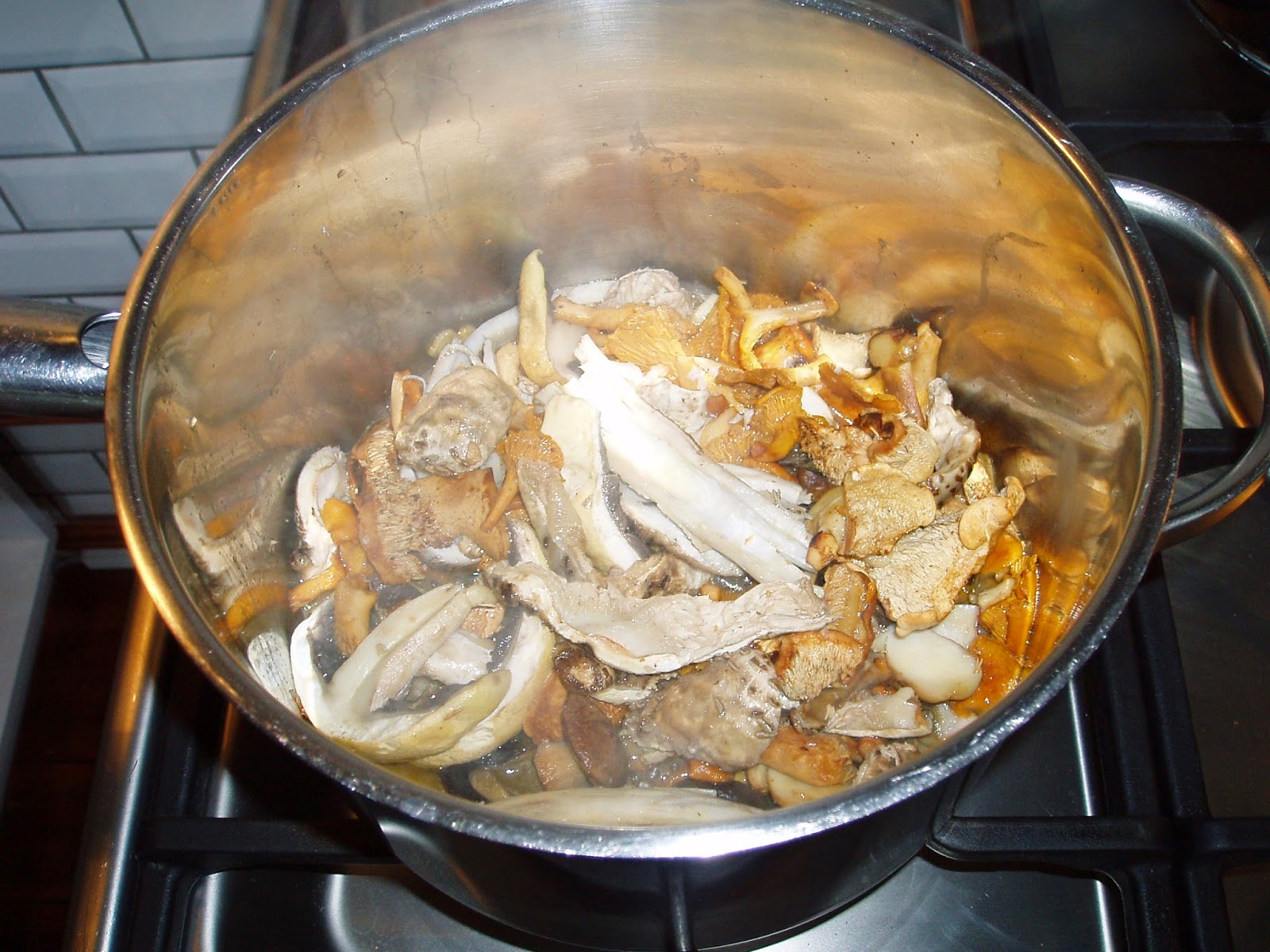Autumn heralds what for me is the highlight of the foraging year: wild mushrooms. Although there are a few varieties of mushroom that arrive in the spring and some that will appear during any damp period in summer, the main season for mushrooms in the UK stretches from about mid-August until the first frosts. Visiting my parents over the August bank holiday weekend, I went on my first mushroom hunt of the season, and found a nice array of boletes, chantrelles, hedgehog, field and parasol mushrooms.
Hunting for mushrooms is one of the most exciting forms of foraging. It requires a fair degree of skill and knowledge, most importantly in terms of identifying mushrooms (of which more below), and in where to look. Even with good skills, you can never tell what results a mushroom hunt will bring: sometimes you may return virtually empty-handed; on others you will return with an abundance of beautiful mushrooms.
As a child, I used to go mushrooming with my dad, often early in the morning. If we found some good field mushrooms, or even a puffball, this would form the basis of our breakfast, often sliced and fried with bacon and an egg. There is something mysterious about the way mushrooms spring from the ground in an amazing variety of shapes and colours, which has always fascinated me. Some species of edible mushrooms taste superb, and can only be found in the wild. People have tried to cultivate many varieties of mushroom and failed, which for me adds to the mystique of the mushroom.
 |
| Horse mushrooms - a relative of the field mushroom |
A word of warning...
Mushroom hunting is not an activity to be undertaken by the inexperienced. Some of the mushrooms that grow in the British countryside, such as the death cap and destroying angel, are deadly poisonous, even if ingested in small amounts. The handsome fly agaric, the classic red toadstool with while spots, is actually both highly hallucinogenic and potentially fatal. There are also varieties that are readily confusable with edible species, such as the yellow-stainer and the false chantrelle, which although not deadly can cause a serious stomach upset.
(1).jpg) |
| A young fly agaric |
I would strongly advise anyone wanting to pick mushrooms for the first time to go with someone who knows what they are doing. One of the most important rules of mushrooming is never to eat anything unless you have identified it with 100% certainty as edible. As well as being able to identify those varieties that are edible, any mushroom picker worth their salt should also be able to identify all those mushrooms that are seriously poisonous, as well as those varieties that are easily confusable with edible fungi. When identifying mushrooms, use at least two guides. I use Roger Phillips amazingly comprehensive book, 'Mushrooms' (published by Macmillan), and the Eyewitness Mushroom guide by Thomas Laessoe (which I think may now be out of print). I recently bought a copy of the River Cottage Mushrooms handbook by John Wright, which contains lots of good practical information about identification and edibility.
Luckily you can now buy wild mushrooms from various specialist suppliers, such as Turnips in Borough Market, so you can buy them without picking them yourself.
Cooking mushrooms.
Returning to our weekend's mushroom hunt. After a lovely walk through a local woodland and a few nearby fields, we returned home with our haul: from the woods a few small ceps (otherwise known as porcini or penny buns), bright yellow chantrelles and pink spiny hedgehog mushrooms. From the fields a few field mushrooms, which look similar to portobello mushrooms but with a stronger flavour, and parasol mushrooms. We had a roast chicken for dinner, so I decided to cook the mushrooms as a side. Wild mushrooms work well with chicken, veal and pork, and are great with pasta or in a risotto. When buying porcini last autumn in Bologna, I had a long conversation with the shopkeeper about the appropriate pasta to eat with mushrooms. He told me that pappardelle (an extra-wide tagliatelle) is best with porcini.
Whether cooking mushrooms as a side or to serve with pasta, I follow the same approach. Some wild mushrooms are quite dense, and require a longer, slower cook than commercially grown mushrooms. This is particularly the case with ceps and hedgehog mushrooms. Before cooking, clean the mushrooms, trying not to get them too wet. A pastry brush can be used to brush off bits of leaf mould, and a damp cloth to clean off any remaining dirt. Once the mushrooms have been cleaned, melt a little butter in a pan. Add some finely chopped garlic and allow to soften for a minute or so. Add the dense mushrooms cut into 1 cm slices, and allow them to cook for about 5 minutes with the lid on. You can then add the softer mushrooms, such as chantrelles, and sliced field mushrooms. Allow these to sweat for a couple of minutes, then add a good slug of white wine. Allow the alcohol to bubble off for a few minutes, then replace the lid and continue to cook slowly for another 5/10 minutes. Finely chop a couple of sprigs of parsley, and add these to the pan once the mushrooms are cooked before serving.


Excellent post, thank you.
ReplyDeleteThanks!
Delete